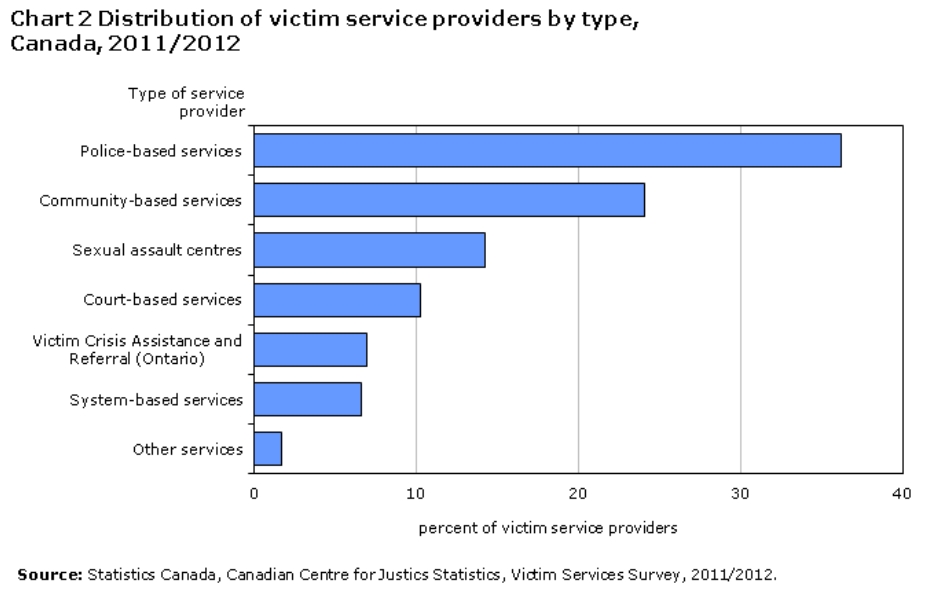In the immediate aftermath of an assault, victims seeking information about the court system are overwhelmingly reaching out to police and community groups — and not the courts themselves.

That finding comes from the
2011/2012 Victim Services Survey released today by Statistics Canada. The report provides a breakdown of the organizations providing front-line care to victims of violent crime.
For the most part, these services are offered at the scene of the crime or immediately thereafter, so it’s not surprising the majority (74 per cent) of service providers comprise police, community groups, and sexual assault centres. By contrast, only 10 per cent of victim service providers form part of the court system.
That being said, victims of violence are quite often looking for information about the justice system: 89 per cent of service providers offer information about the courts; another 90 per cent offer assistance to victims pressing charges (including help with witness preparation, victim impact statements and court accompaniment); about half provide what can be termed “legal advice.”
This disconnect between providers of victim services (police, community groups) and types of services provided (assistance with courts) sheds light on the yawning gap between crisis intervention and justice within the courts.
There is a good reason, however, that courts have relatively little involvement in front-line victim services. As the report indicates, victims are simply not willing to enter the process. Findings show three-quarters of victims were female. And, of these, 61 per cent were victims of a violent offence by a spouse, ex-spouse, or family member.
So, while victims require immediate aid after a violent attack — such as protection, shelter, and medical care — and they’re definitely sussing out legal options and obtaining information on the courts, many are reluctant to press charges.
An initiative that will likely increase the involvement of courts and empower victims to act against their offenders is the forthcoming federal Victim Rights Bill. Details on the bill have been hard to come by, but after over a year of consultation, Finance Minister Jim Flaherty released a few hints in Monday’s Federal Budget.
The document proposes the creation of a web site that will allow victims to access information about their offender before that person is released from custody, as well as a national DNA-based missing persons index.
Critics argue the legislation — if it’s enforceable — will provide little assistance to victims, but Sue O’Donnell, Federal Ombudsman for the Victims of Crime, issued a statement yesterday commending the government for moving forward:
“The introduction of a Victims Bill of Rights has the potential to significantly change the criminal justice system to better acknowledge the important role that victims have to play and to ensure that victims are treated with the respect and consideration they deserve,” said O’Sullivan.
“While it still remains to be seen whether the measures covered in the proposed bill will sufficiently address victims’ needs and concerns, it is encouraging to see that the Government has committed in Budget 2014 to supporting the measures as required.”
The ombudsman was unavailable to comment on the Statistics Canada findings.

 That finding comes from the 2011/2012 Victim Services Survey released today by Statistics Canada. The report provides a breakdown of the organizations providing front-line care to victims of violent crime.
That finding comes from the 2011/2012 Victim Services Survey released today by Statistics Canada. The report provides a breakdown of the organizations providing front-line care to victims of violent crime.